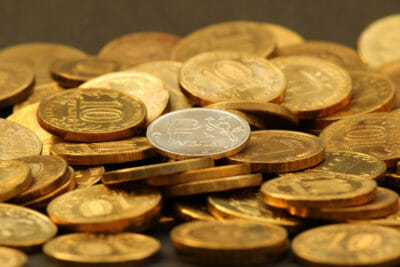|
Listen To The Article
|
The Russian Federation Central Bank has continued to unload a good part of their U.S. Treasuries stock. This took the country’s overall capital from $96.2 billion down to less than $14.9 billion. This, in a matter of a few short months.
According to many analysts, the Russian Federation’s financial sector is actively preparing its economy for a global financial meltdown.
While the June data hasn’t been fully finalized yet, it’s safe to conclude that so far the CBRF has effectively liquidated about 85% of its US Treasuries stock.
Buying Gold As Global Financial Meltdown Nears?
However, the most interesting part about this news is the fact that the CBRF is steadily and progressively stocking up on gold reserves.
In fact, data from the Central Bank shows that gold reserves grew from 60,061 million ounces in April to 61,884 million ounces at the beginning of June.
It’s also interesting to note that the Central Bank’s move to invest in gold has sparked a fair amount of outrage. Most of it from those who think gold is no longer a meaningful store of value. However, for those who have studied past preparations for instability, loading up on gold reserves has, in fact, been a historical Central Bank response in preparation for a potential global financial meltdown.
The detractors argue that purchasing gold at higher prices is foolish. Others ask what is a high price for gold. high price and but certain events may occur in the near future that could dramatically increase the price of gold and the value of reserves.
Russian Financial Sector Pushing for Increased Self-Sufficiency
Now, before we make any sweeping conclusions, let’s take a look at this situation from the perspective of a systems analyst.
For starters, a lot of state-owned corporations and state owned banks have either started switching from SWIFT to the Russian system of financial message transfer or are in the process of doing so. Apparently, this will help consolidate all Russian credit organizations under one roof, thus allowing for faster transactions, better security and improved reliability, while also optimizing expenses.
Also, a recent meeting between Russian President Vladimir Putin and VTB head Andrey Kostin revealed quite a few interesting things about the direction taken by the Russian financial sector in preparation for the global financial meltdown.
Global Financial Meltdown Means Getting Rid Of Dollars… Now!
For one, Kostin’s report revealed that the number of people who are willing to take out dollar loans or make dollar deposits has decreased significantly since the beginning of the year. According to the report, this is a clear sign that the Russian financial sector is steadily moving toward total de-dollarization.
As a result, the Russian market is quickly moving towards more self-sufficiency through financial tools like investing in non-U.S. shares, floating Eurobonds, and exploring the development of other non-U.S. financial products. Alternatives like these were presented as part of a proposed package that included many ideas all meant to diminish U.S. holdings.
This specific report goes on to add that these measures will help isolate the Russian financial sector against external “market shocks” while simultaneously strengthening its internal development.
Conclusion
What’s really going on here? It’s pretty obvious that both public companies and State banks are in the process of de-dollarizing the Russian economy. The theory is that these actions will not only improve the country’s chances for economic autonomy, but it will also help these organizations avoid any potential issues with SWIFT.
Further, this will increase the independence and reliability of all payment, communication, and other financial systems within the Russian financial structure.
Nevertheless, dumping the dollar and linking Russian currency to real reserves will undoubtedly strengthen the Russian economy against the effects of a possible global financial meltdown.
And the way things are looking, it seems like there’s nothing the U.S. can say or do to change Russia’s aspirations for economic self-sufficiency.
 Off The Grid News Better Ideas For Off The Grid Living
Off The Grid News Better Ideas For Off The Grid Living



